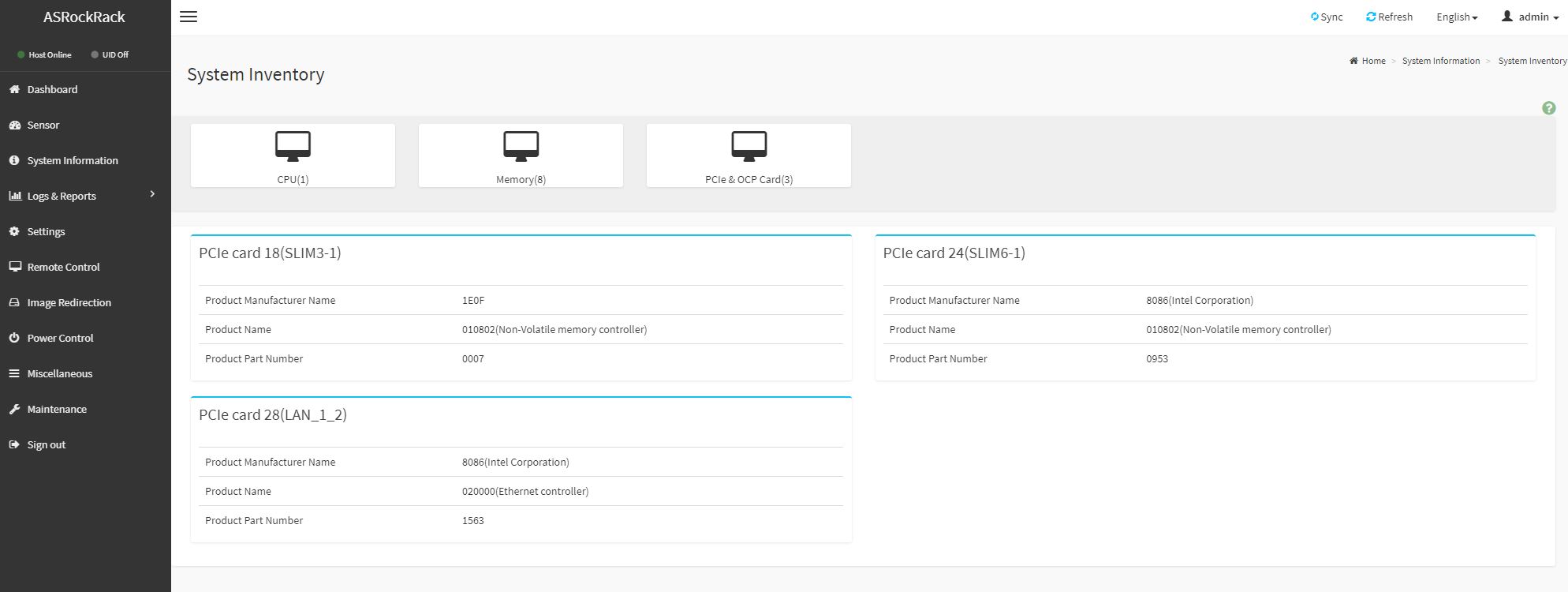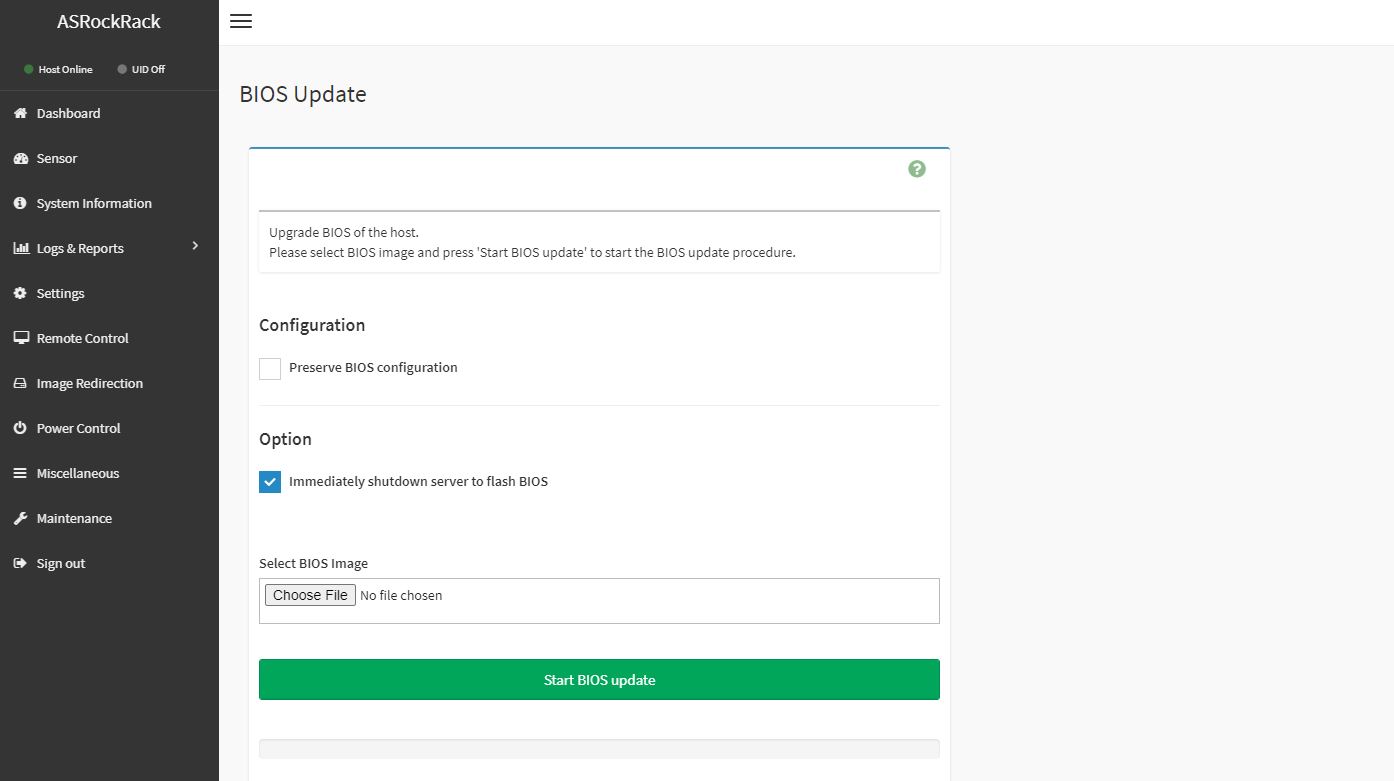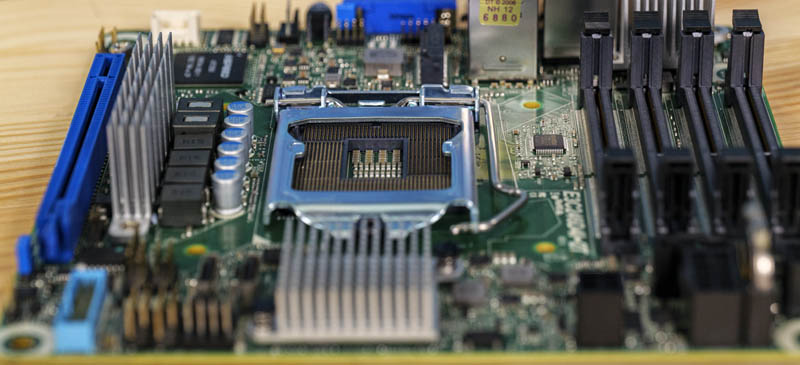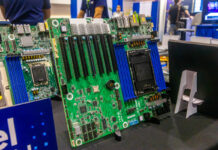ASRock Rack Management
In our hardware overview, we showed the out-of-band management port. This allows OOB management features such as IPMI but also allows one to get to a management page. ASRock rack seems to be using a lightly skinned MegaRAC SP-X interface. This interface is a more modern HTML5 UI that performs more like today’s web pages and less like pages from a decade ago. We like this change.
Going through the options, the ASRock Rack solution seems as though it is following the SP-X package very closely. As a result, we see more of the standard set of features and options.

One nice feature is that we get a modern HTML5 iKVM solution. Some other vendors have implemented iKVM HTML5 clients but did not implement virtual media support in them at the outset. ASRock Rack has this functionality as well as power on/ off directly from the window.

Many large system vendors such as Dell EMC, HPE, and Lenovo charge for iKVM functionality. This feature is an essential tool for remote system administration these days. ASRock’s inclusion of the functionality as a standard feature is great for customers who have one less license to worry about.
Beyond the iKVM functionality, there are also remote firmware updates enabled on the platform. You can update the BIOS and BMC firmware directly from the web interface. This is something that Supermicro charges extra for.
We are going to note that our test system came with a default admin/ admin username and password. It was an international system that ASRock Rack sent us so technically it was not sold in California. Still, we expect to see more random passwords coming to ASRock and do not be surprised if a platform you purchase has a unique password. We explain why here:
Next, let us look at the test configuration before getting to performance.
ASRock Rack E3C246D4I-2T Test Configuration
For this test we utilized the following setup:
- System: ASRock Rack E3C246D4I-2T
- CPU: Intel Xeon E-2286G
- Cooling: Stock Intel cooler
- RAM: 2x 16GB DDR4 ECC SODIMMs
- Storage: Intel DC S3710 400GB
Overall, we think this is a common configuration for a server like this. We could see these being used as either compact and lower-power compute nodes or as storage nodes given the features onboard.

We wanted something that would be somewhat similar to the ASRock Rack X570D4I-2T test configuration since they are similar motherboards in many ways. We can see some hosting providers or other organizations having platforms with both Intel and AMD solutions possible in this common form factor.
Next, let us get to performance testing before getting to power consumption and final words.




These boards are perfect for a vsan home lab. With dual 10gbe amazing. Get a microtik 10gbe switch and you are flying.
You could/could you get a 4x pcie to m.2 for the pcie slot and plug in your nvme storage.
At the end of the day all this adds up.
Does it support bifurcation x4x4x4x4 ? Can’t find it listed anywhere
@Casper
according to the datasheet for the Xeon E-2100 and E-2200 families, those CPUs do not support x4x4x4x4 bifurcation. Only x8x8 or x8x4x4 as per datasheet…
So AsRock made an Intel version of their X570D4I-2T? Striking similarities across the board. *hehe*
Was a bit surprised I didn’t see a mention of the review you did a while back.
@Kwirek – under the test configuration picture we mention this and why it is impactful.
@Dr. Manhatten
Did not think about looking in that data sheet, Thanks for clarification! :)
@Casper
i was just taking a look at the motherboard manual. I am not sure the board supports PCIe bifurcation at all, regardless of whether x8x8 or x8x4x4 (it is the job of the BIOS to set a bifurcation configuration based on CPU capability). The manual never mentions bifurcation once. While the BIOS has a parameter “PCIE Link Width”, this parameter remains largely unexplained. It might be related to PCIe bifurcation, or it might not. If in doubt, i would err on the side of caution and assume the board’s BIOS does not support bifurcation unless proven otherwise…
what cooler were you able to fit on it?
Too bad there isn’t a HDMI/video out from the CPU on the board as well.
Regarding bifurcation. I actually purchased this board (Assuming it didn’t bifurcate). The “PCIE Link With” option appears to be the bifurcation setting with x16, x8x8 or x8x4x4 options listed. Haven’t actually tested it yet however.
Looking for anyone else to corroborate a problem I’m seeing with this motherboard. Here is how to reproduce it:
1. Install any windows OS on a disk array utilizing the Onboard Intel Enterprise Software RAID
2. Make sure the ASPEED graphics drivers are installed
3. Initiate a RAID rebuild (pull one of the disks)
4. while the array is rebuilding, reboot the server
At this point, every system we test is going to a BSOD “DRIVER IRQL NOT LESS OR EQUAL”
If you uninstall the ASPEED graphics driver, the system will boot normally.
Here is a stupid question I must ask: I have the E3C256D4I-2T board which is identical just an upgrade. Do you plug in both the 4-pin to 24-pin and the 8-pin atx power or just the 4-pin to 24-pin adapter to power on. Is the 8-pin just reserved for DC-in only or does the board need extra power like a traditional board with the 8-pin attached. My problem is if I plug in the 8-pin along with the 4-24 adapter the board wont start. Its only with the 8-pin detached does it start….